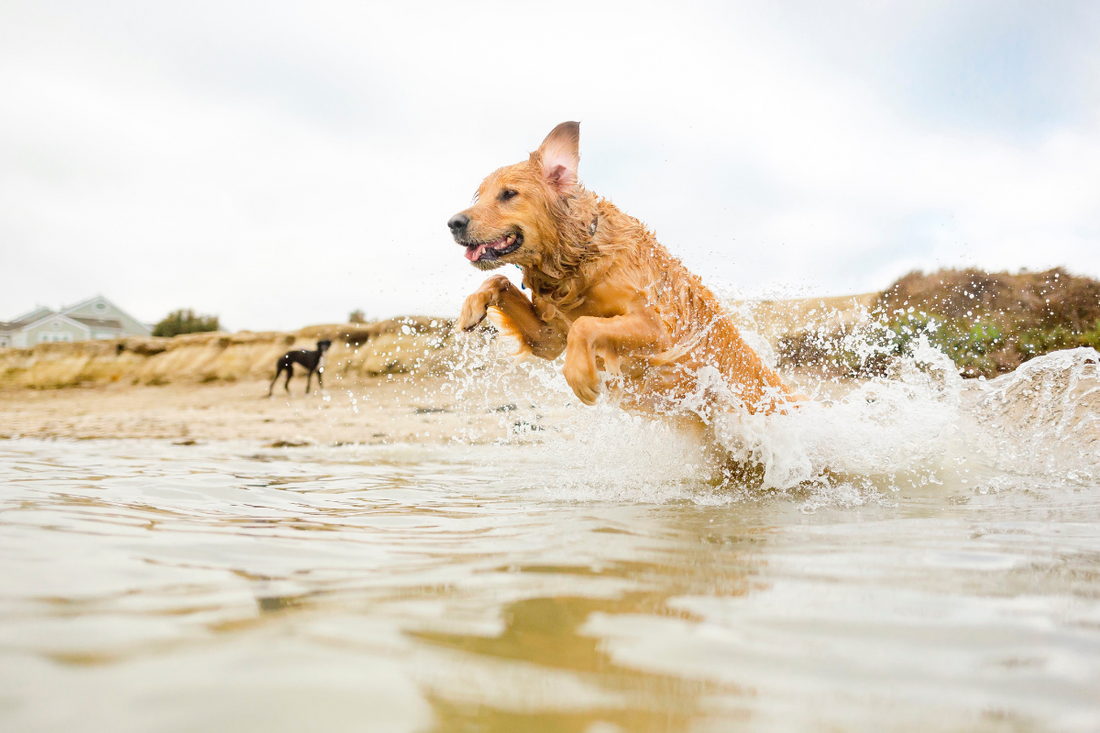
Beach & Lake Hikes: Water Safety 101 for Dogs
Share
Few summer adventures match the joy of hiking to a cool lake or a breezy shoreline with your dog. The splash of water, open skies, and scenic trails are a perfect way to beat the heat. But beach and lake hikes come with their own set of challenges, especially when your dog is involved.
Whether you're planning a lakeside picnic or a coastal hike, it's important to understand the unique safety concerns that water environments pose. In this guide, we’ll walk through how to prepare, what to watch for, and how to make the most of these water outings with your dog.
Choosing the Right Spot
Start by selecting a dog-friendly destination. Not every beach or lake allows dogs, and those that do may have seasonal or leash-specific regulations. Before you hit the trail:
- Check local regulations on dog access and leash rules.
- Opt for calm waters, such as gentle lakes or protected coves, rather than open beaches with strong tides.
- Avoid areas with algae blooms, especially blue-green algae, which can be toxic to dogs even in small amounts.
Look for well-maintained trails that offer shady spots and clear entry points into the water.
Is Your Dog Ready to Swim?
Contrary to popular belief, not all dogs are natural swimmers. Some love the water instantly, while others may feel anxious or uncomfortable. Before heading into deeper water:
- Introduce water gradually, allowing your dog to explore at their own pace.
- Use a life jacket designed for dogs, especially for breeds that aren’t strong swimmers or dogs that tire easily.
- Supervise closely, even in shallow areas. Dogs can misjudge depth or become disoriented in moving water.
- For dogs new to swimming, start in shallow water and reward calm behavior. If your dog resists, don’t force it, some dogs simply prefer to stay dry.
Consider the Water Temperature
Even on a hot summer day, lakes, especially those fed by mountain streams or snowmelt, can remain dangerously cold. Sudden immersion in cold water can lead to shock, muscle cramps, or panic in dogs, just as it can in humans.
Before letting your dog jump in:
- Test the water yourself with your hand or foot. If it feels uncomfortably cold, it’s likely too cold for your dog to swim safely.
- Watch for signs of discomfort, such as shivering, hesitation, or trying to exit the water quickly.
- Limit exposure time in cooler water, especially for small dogs, seniors, or short-haired breeds who lose body heat quickly.
If you're hiking at elevation or early in the season, prioritize sun-warmed shallow areas where water temperatures are more tolerable.
Spotting Water Hazards
Even in seemingly serene environments, hidden dangers can lurk beneath the surface. Keep an eye out for:
- Sharp rocks, shells, or broken glass along the shoreline or underfoot.
- Fishing lines or hooks, which can entangle paws or be accidentally ingested.
- Strong currents, boat wakes, or steep drop-offs that could overwhelm your dog.
Carry a basic first aid kit and inspect paws for cuts or abrasions after water play.
Bring Clean Water, Not Just a Towel
One of the easiest ways to keep your dog safe is by providing access to clean, fresh water throughout the hike. Dogs will often drink from lakes or the ocean if they’re thirsty, which can lead to:
- Saltwater poisoning, which causes vomiting, diarrhea, or dehydration.
- Ingesting harmful bacteria or parasites, especially in stagnant or murky water.
Pack a portable water bowl and offer regular breaks for hydration. Don’t rely on natural water sources alone.
Bug Protection by the Water
Summer trails near water can attract more than just hikers and pups, they’re also a hotspot for bugs. Prepare for:
- Ticks, which often lurk in tall grasses along lake trails. Always do a post-hike tick check.
- Mosquitoes, which can carry heartworm and be particularly aggressive at dusk.
- Biting flies and gnats, which irritate both dogs and humans.
Use a dog-safe repellent or vet-recommended protection before the hike, and inspect your dog after each adventure.
After the Splash
Once your hike is done and your dog has had their fun in the water, be sure to finish strong with proper post-hike care:
- Rinse off salt, sand, and debris, especially around the paws, belly, and under the collar.
- Dry ears thoroughly to reduce the risk of ear infections, particularly for dogs with floppy ears.
- Groom and inspect for ticks, cuts, or irritations before heading home.
Bringing a quick-dry towel and some paw balm will make cleanup simple and protect your dog’s comfort after the trail.
Make It a Summer to Remember
Water hikes are some of the most rewarding summer outings you can share with your dog. With a little preparation and the right precautions, you can turn a simple lake or beach hike into a safe, memorable adventure. As always, trust your dog’s instincts, and your own, when it comes to exploring new environments.
Let’s Hear About Your Water Hikes
Have a favorite dog-friendly beach or lake trail? Share your go-to spots or a favorite memory in the comments below. And don’t forget to check out more trail-tested tips on our blog to keep your dog safe, cool, and happy all season long.
